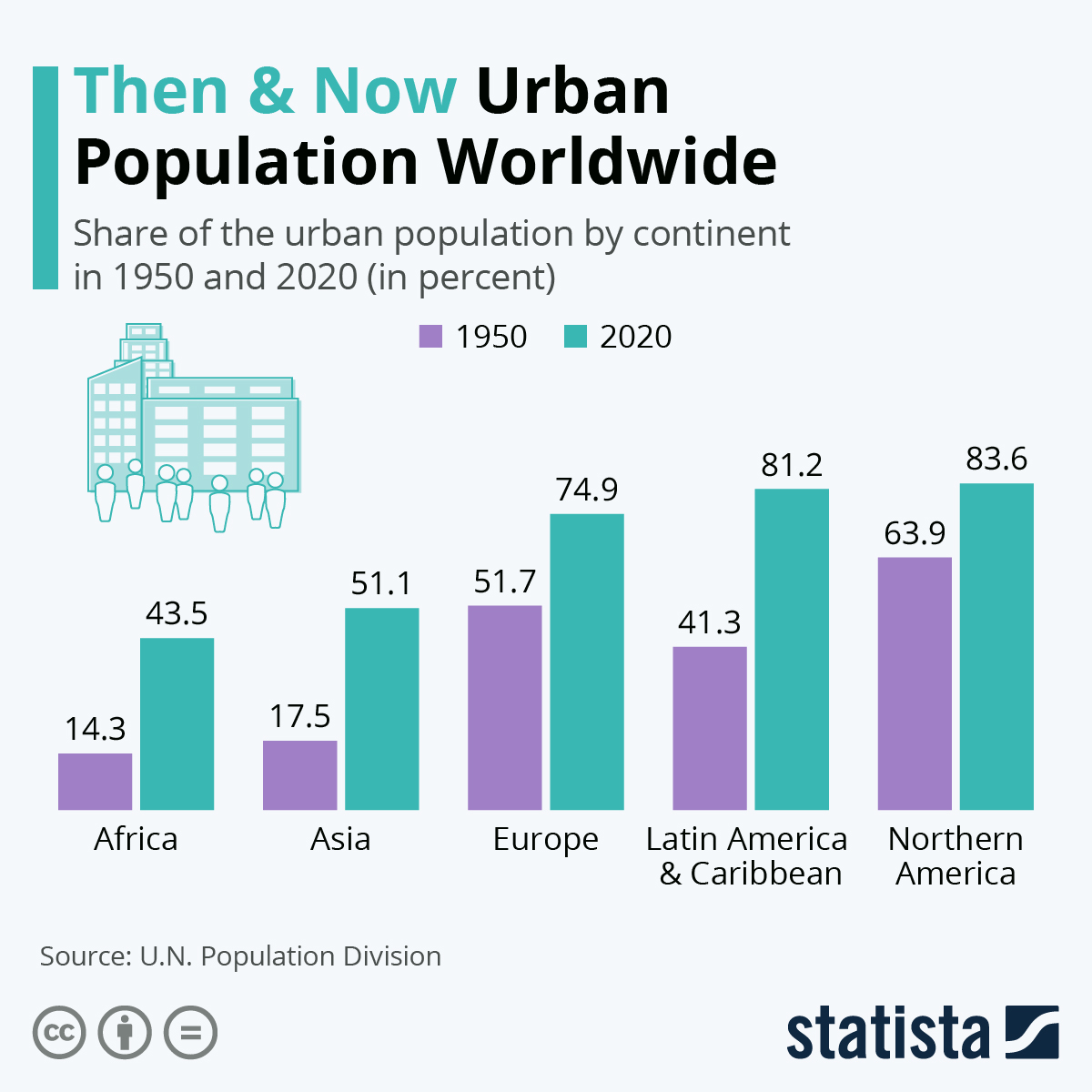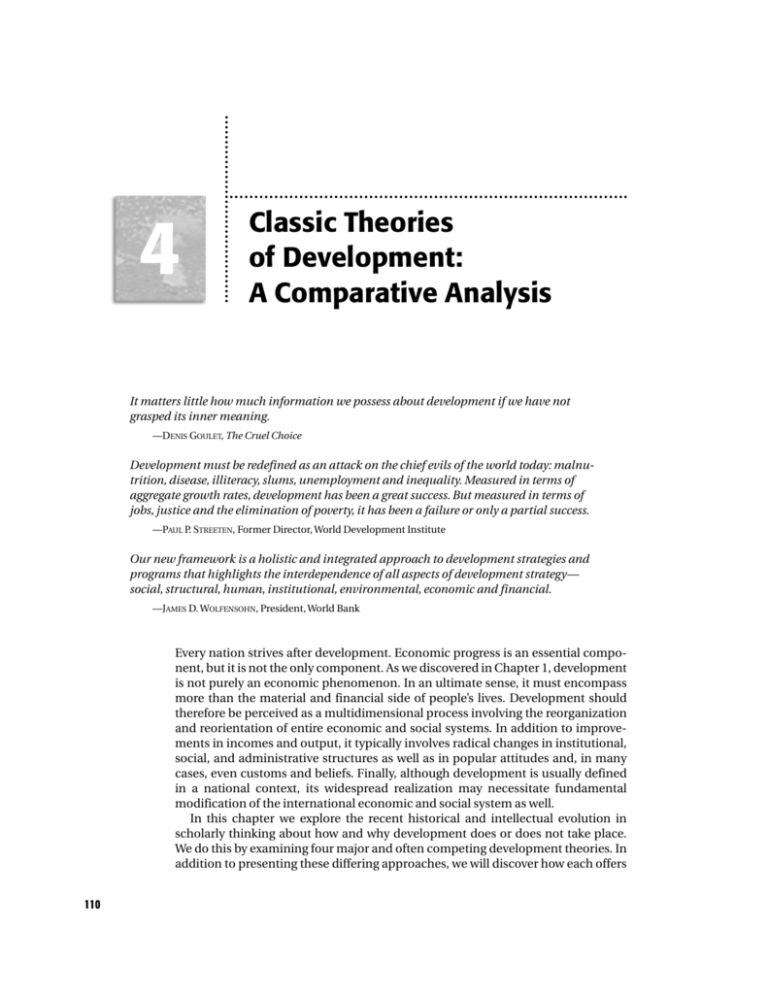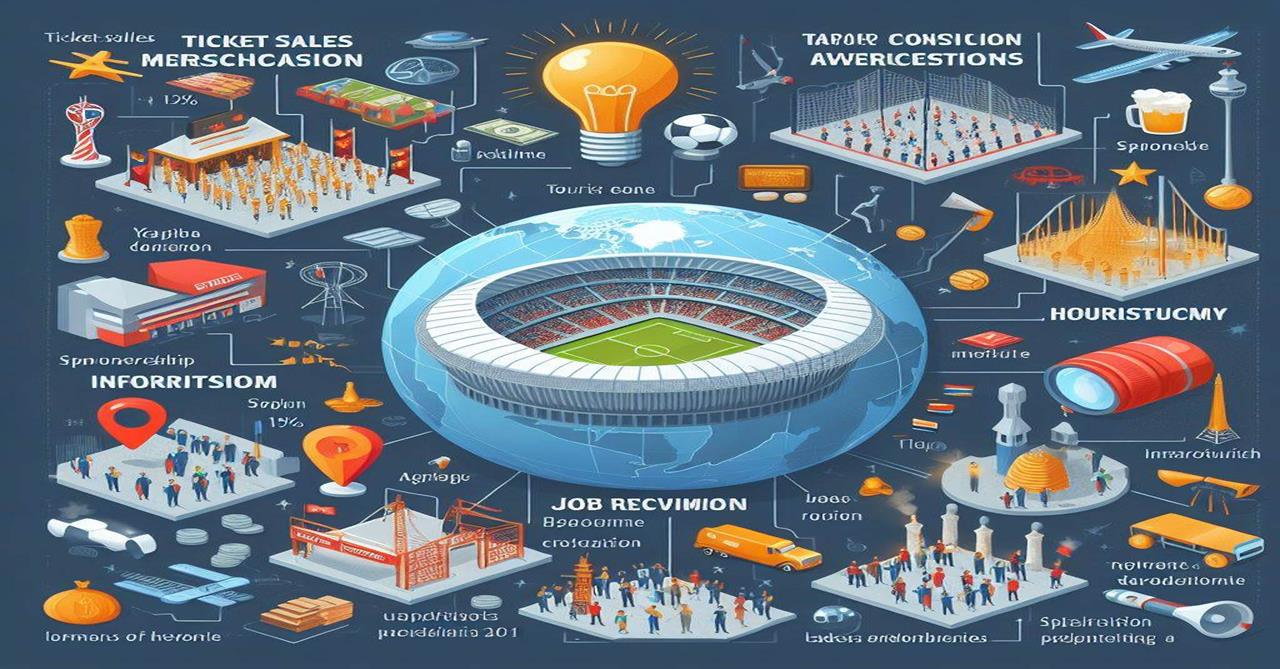
Global Urbanization Trends and Economic Development: Understanding Our Changing World
The world is transforming at an incredible pace, and one of the most significant shifts is the rapid growth of cities. For the first time in history, more than half of the global population lives in urban areas, and this number is projected to keep climbing. This massive movement of people from rural areas to cities, known as urbanization, has profound implications for everything from our economies and environments to our social structures and daily lives.
This article will explore the fascinating link between global urbanization trends and economic development. We’ll break down what urbanization means, why it’s happening, how it fuels economic growth, the challenges it presents, and the incredible opportunities it offers for a more prosperous and sustainable future.
What Exactly is Urbanization?
At its simplest, urbanization is the process by which a growing number of people move from rural areas (the countryside) to urban areas (cities and towns). It’s not just about population growth in cities; it’s also about the expansion of urban areas themselves, with new buildings, infrastructure, and services popping up to accommodate the increasing number of residents.
Think of it this way: In the past, most people lived in small villages or on farms. Today, towering skyscrapers, bustling markets, and complex transportation networks define where a majority of us reside. This shift is a defining feature of the 21st century.
The Driving Forces Behind Global Urbanization
Why are so many people flocking to cities? The reasons are diverse, but they often boil down to the promise of a better life.
- Economic Opportunities: This is by far the biggest magnet. Cities are often centers of industry, commerce, and innovation, offering more jobs, higher wages, and a wider variety of employment options compared to rural areas.
- Better Access to Services: Urban areas typically boast superior access to essential services like:
- Education: More schools, colleges, and universities.
- Healthcare: More hospitals, clinics, and specialized medical professionals.
- Utilities: Reliable electricity, clean water, and sanitation systems.
- Social and Cultural Amenities: Cities offer a richer tapestry of cultural experiences, entertainment options (theaters, museums, restaurants), and social connections. There’s often a greater sense of anonymity and freedom, which can be appealing.
- Technological Advancements: Modern communication and transportation make it easier for people to connect and move within urban centers, further enhancing their appeal.
- Rural Push Factors: Sometimes, people leave rural areas not just for the pull of cities, but because of difficulties in the countryside, such as:
- Limited land for farming
- Poverty and lack of jobs
- Environmental degradation or climate change impacts (e.g., drought)
Urbanization and Economic Development: A Two-Way Street
The relationship between urbanization and economic development is deeply intertwined and mutually reinforcing. They don’t just happen alongside each other; they actively influence and drive one another.
How Urbanization Fuels Economic Growth
Cities are often called the "engines of economic development" for good reason. Here’s how:
-
Concentration of Labor and Markets:
- More Workers: Cities bring together a large pool of labor, from skilled professionals to entry-level workers, making it easier for businesses to find the staff they need.
- Larger Markets: A dense population means more potential customers for goods and services, stimulating demand and encouraging businesses to grow.
-
Innovation and Knowledge Sharing:
- Idea Factories: When many diverse people live and work closely, ideas clash, combine, and evolve faster. This makes cities hubs for innovation, research, and development.
- Talent Clusters: Industries often cluster in cities (e.g., Silicon Valley for tech, London for finance), attracting specialized talent and creating a vibrant ecosystem for new businesses.
-
Infrastructure Investment:
- Efficient Services: The concentration of people makes it more cost-effective to build and maintain essential infrastructure like roads, public transport, electricity grids, water pipes, and internet networks. These investments, in turn, boost economic productivity.
- Connectivity: Well-developed infrastructure facilitates the movement of goods, services, and people, reducing business costs and increasing efficiency.
-
Specialization and Productivity:
- Division of Labor: In a larger urban economy, individuals and businesses can specialize in specific tasks or products, leading to greater efficiency and higher output.
- Economies of Scale: Businesses can produce goods and services on a larger scale, reducing per-unit costs and making them more competitive.
-
Access to Capital:
- Cities are typically home to major financial institutions, banks, and investors, making it easier for businesses to secure the funding they need to start, grow, and innovate.
How Economic Development Shapes Urbanization
It’s not just a one-way street. Economic development also plays a crucial role in shaping urbanization:
- Investment in Urban Areas: As countries become wealthier, they can invest more in urban infrastructure, housing, and public services, making cities more attractive and livable.
- Improved Quality of Life: Economic growth can lead to better living standards, which in turn encourages more people to move to cities where those benefits are more readily available.
- Job Creation in Cities: Economic diversification and industrial growth often create new jobs predominantly in urban centers, drawing people in.
Key Global Urbanization Trends
The face of global urbanization is constantly evolving. Here are some of the most important trends we’re seeing:
- Rapid Growth in Developing Countries: The fastest rates of urbanization are currently in Asia and Africa. Cities in these regions are growing at an unprecedented speed, often doubling in size within a single generation.
- Rise of Megacities: A megacity is an urban area with a population of over 10 million people. We’re seeing more and more of these colossal urban centers emerge, particularly in the developing world (e.g., Tokyo, Delhi, Shanghai, Lagos). These cities present unique challenges and opportunities due to their sheer scale.
- Growth of Secondary Cities: While megacities grab headlines, many experts believe the future of sustainable urbanization lies in the growth of smaller to medium-sized cities (often called secondary cities). These cities can offer many urban benefits without the extreme pressures of megacities.
- Smart City Initiatives: Cities are increasingly leveraging technology to improve urban living. "Smart cities" use data, sensors, and digital networks to manage traffic, conserve energy, improve public safety, and deliver services more efficiently.
- Focus on Sustainability and Resilience: With growing concerns about climate change and environmental impact, there’s a strong push for "green" or "sustainable" urbanization. This includes developing eco-friendly buildings, improving public transport, creating green spaces, and building cities that can withstand environmental shocks.
- Digitalization of Urban Life: The internet and mobile technology are reshaping how people live, work, and interact in cities, from e-commerce and ride-sharing to remote work and online education.
The Challenges of Rapid Urbanization
While urbanization is a powerful engine for progress, rapid and unplanned growth can lead to significant problems, especially in developing nations.
-
Housing Crisis and Slum Growth:
- Lack of Affordable Housing: As populations surge, housing demand often outstrips supply, driving up prices and making it unaffordable for low-income residents.
- Informal Settlements (Slums): Millions are forced to live in overcrowded, unsafe, and unsanitary informal settlements or slums, lacking basic services like clean water, sanitation, and electricity.
-
Strain on Infrastructure and Services:
- Traffic Congestion: More people mean more vehicles, leading to gridlock, pollution, and lost productivity.
- Inadequate Public Transport: Many cities struggle to develop efficient public transportation systems to cope with demand.
- Overloaded Utilities: Water, electricity, and waste management systems can become overwhelmed, leading to shortages and breakdowns.
- Insufficient Public Services: Schools, hospitals, and emergency services may not be able to keep up with the growing population’s needs.
-
Environmental Degradation:
- Air and Water Pollution: Increased industry, vehicles, and waste generation lead to poorer air quality and contaminated water sources, impacting public health.
- Waste Management: Cities produce vast amounts of waste, and inadequate disposal systems can lead to land and water pollution.
- Loss of Green Spaces: Urban expansion often comes at the expense of parks, forests, and agricultural land, reducing biodiversity and natural flood protection.
- Climate Change Impact: Cities are major contributors to greenhouse gas emissions and are often vulnerable to the impacts of climate change (e.g., sea-level rise, extreme heat).
-
Social Challenges and Inequality:
- Increased Inequality: The benefits of urbanization are often not equally distributed, leading to stark divides between the rich and the poor within cities.
- Unemployment and Underemployment: While cities offer jobs, not everyone finds suitable employment, leading to frustration and poverty.
- Crime and Social Disorder: Rapid growth and inequality can sometimes contribute to higher crime rates and social unrest.
- Mental Health Issues: The fast pace, crowding, and stress of urban life can sometimes contribute to mental health challenges.
-
Governance and Planning Difficulties:
- Lack of Integrated Planning: Many cities grow organically without proper long-term planning, leading to chaotic development.
- Weak Governance: Corruption, lack of resources, and insufficient capacity can hinder effective urban management.
- Financing Challenges: Funding the massive infrastructure and service needs of rapidly growing cities is a huge financial undertaking.
Opportunities in Urbanization: Building a Better Future
Despite the challenges, urbanization also presents incredible opportunities for human progress and sustainable development.
-
Economic Dynamism and Job Creation:
- Engines of Growth: Cities will continue to be the primary drivers of national and global economies, fostering innovation and creating new industries.
- Concentration of Talent: They attract and retain skilled workers, leading to higher productivity and competitiveness.
-
Innovation and Technological Advancement:
- Labs for Solutions: Cities are ideal testing grounds for new technologies and innovative solutions to global challenges, from renewable energy to smart transportation.
- Digital Transformation: The concentration of people and infrastructure makes cities prime candidates for advanced digital services and connectivity.
-
Social Progress and Diversity:
- Melting Pots of Culture: Cities are diverse hubs where different cultures, ideas, and perspectives mix, fostering creativity and tolerance.
- Access to Information: Urban residents often have better access to information, leading to more informed citizens and greater civic engagement.
- Empowerment: Cities can offer greater opportunities for social mobility and empowerment, particularly for women and marginalized groups.
-
Efficiency and Resource Management:
- Lower Per Capita Footprint: Denser urban living can potentially lead to a lower per capita environmental footprint compared to sprawling rural or suburban areas, if well-managed (e.g., less travel, shared resources).
- Scalable Solutions: Sustainable solutions (like public transport or district heating) are often more efficient to implement and manage in dense urban environments.
-
Poverty Reduction:
- While inequality can be a problem, successful urbanization can lift millions out of poverty by providing access to jobs, education, and social services.
Towards Sustainable and Inclusive Urbanization
The key to harnessing the opportunities of urbanization while mitigating its challenges lies in sustainable and inclusive urban development. This means planning and managing cities in a way that meets the needs of the present generation without compromising the ability of future generations to meet their own needs.
Here’s what that looks like:
- Integrated Urban Planning: Moving away from chaotic growth to comprehensive, long-term plans that consider housing, transport, green spaces, and economic development together.
- Investment in Green Infrastructure: Prioritizing public transport, cycling infrastructure, walkable neighborhoods, parks, and green buildings to reduce pollution and improve quality of life.
- Affordable and Equitable Housing: Implementing policies to ensure that everyone, regardless of income, has access to safe, adequate, and affordable housing, preventing the growth of slums.
- Smart Technology for Good: Using technology not just for efficiency, but to improve social equity, public participation, and environmental sustainability.
- Circular Economy Principles: Designing cities to minimize waste and maximize resource efficiency by reusing, recycling, and repurposing materials.
- Resilient Cities: Building cities that can withstand and recover from shocks like natural disasters, economic crises, and pandemics.
- Participatory Governance: Involving citizens, communities, and local stakeholders in the planning and decision-making processes to ensure that urban development meets the real needs of the people.
- Investing in Secondary Cities: Strategically developing smaller and medium-sized cities to relieve pressure on megacities and distribute economic opportunities more evenly.
Conclusion
Global urbanization is one of the most powerful and defining trends of our time. It is a complex phenomenon, offering immense potential for economic growth, innovation, and social progress, but also posing significant challenges related to inequality, environmental strain, and the provision of basic services.
The future of humanity will largely be an urban future. By understanding the forces driving urbanization, acknowledging its complexities, and committing to thoughtful, sustainable, and inclusive urban planning, we can build cities that are not just economically prosperous, but also livable, equitable, and resilient for everyone. The decisions we make today about our cities will shape the world for generations to come.
Frequently Asked Questions (FAQs)
Q1: What is the main difference between urbanization and population growth?
A1: Population growth refers to the increase in the total number of people in a given area. Urbanization specifically refers to the proportion of the total population living in urban areas increasing, often due to people moving from rural areas to cities. So, a country’s total population might be growing, but if more people are moving to cities, it’s also urbanizing.
Q2: Why are cities called "engines of economic development"?
A2: Cities are called "engines" because they concentrate people, businesses, and resources in one place. This density makes it easier to exchange ideas, find workers, access markets, and invest in shared infrastructure. This combination often leads to higher productivity, more innovation, and greater wealth creation compared to dispersed rural areas.
Q3: What is a "smart city" and why is it important for urbanization?
A3: A "smart city" uses technology and data to improve the quality of life for its residents, manage resources efficiently, and make city operations smoother. This includes things like smart traffic lights to reduce congestion, sensors to monitor air quality, or digital platforms for public services. Smart city initiatives are important because they can help address many of the challenges of rapid urbanization, making cities more livable, sustainable, and efficient.
Q4: What is "sustainable urbanization"?
A4: Sustainable urbanization means planning and managing cities in a way that balances economic growth, social equity, and environmental protection. It aims to meet the needs of current city residents without harming the ability of future generations to meet their own needs. This involves things like green buildings, efficient public transport, renewable energy, waste reduction, and ensuring everyone has access to basic services and opportunities.




Post Comment